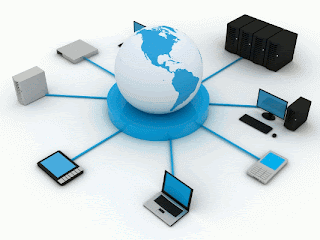A computer network consists of two or more computers connected in some way so that they can share hardware (printers, storage devices), software programs, data, and other resources. Each microcomputer connected to a network is referred to as a workstation (or client). Data is sent from one device on a network to another over a cable or by a wireless signal.
The network server (or host server) is a network resource. It distributes application
Even though a computer workstation is connected to a network, it still contains the same local resources as a computer that’s not connected to a network. The workstation’s memory, processor, and storage devices are available locally, as are the programs and data files stored on the hard drive.
A network that is located within a relatively limited area, such as a building or campus, is referred to as a local area network (LAN). LANs are found in many homes, businesses, government offices, and educational institutions.
A network that covers a large geographical area is referred to as a wide area network


No comments:
Post a Comment